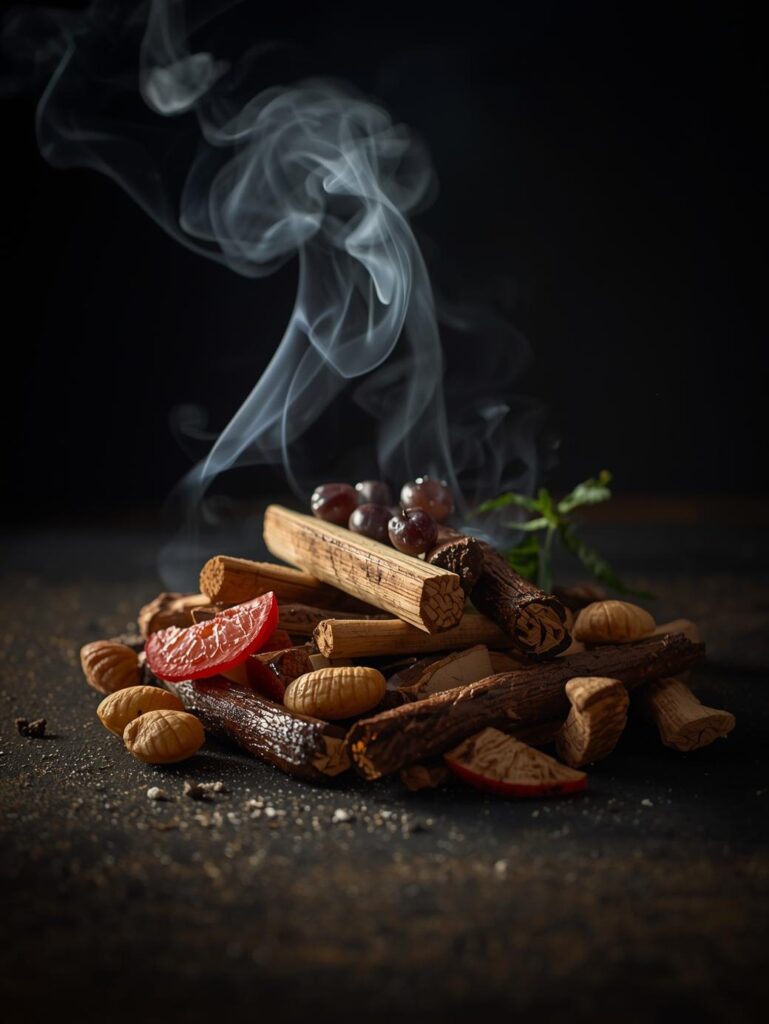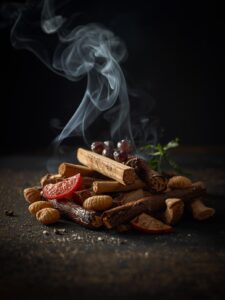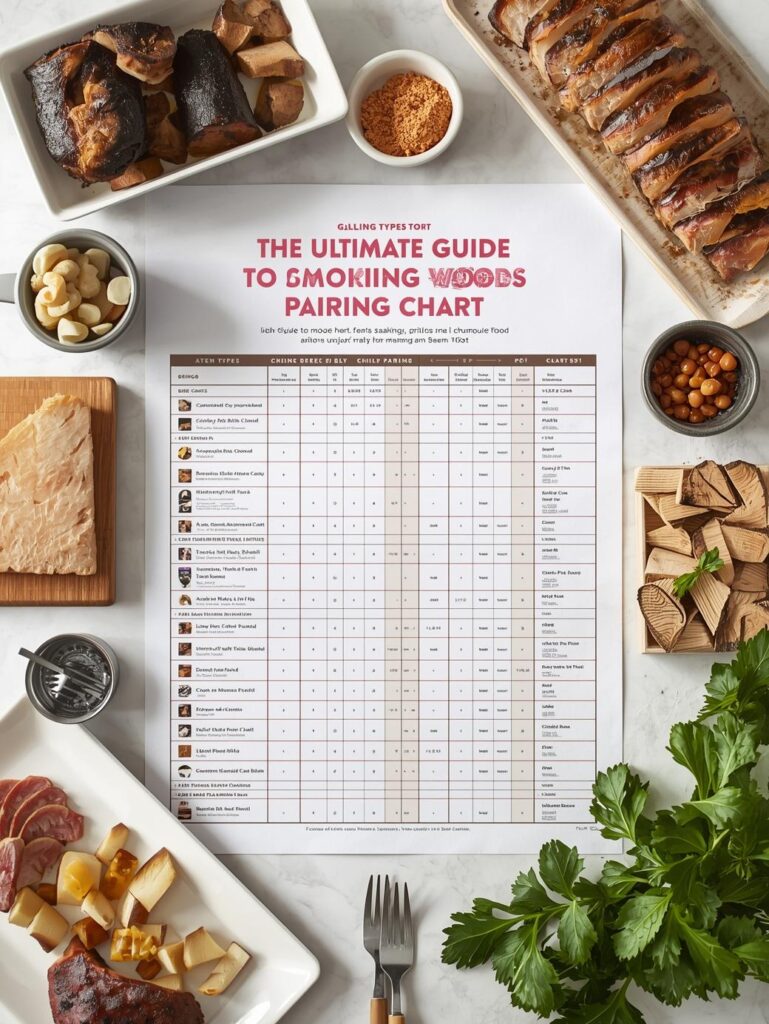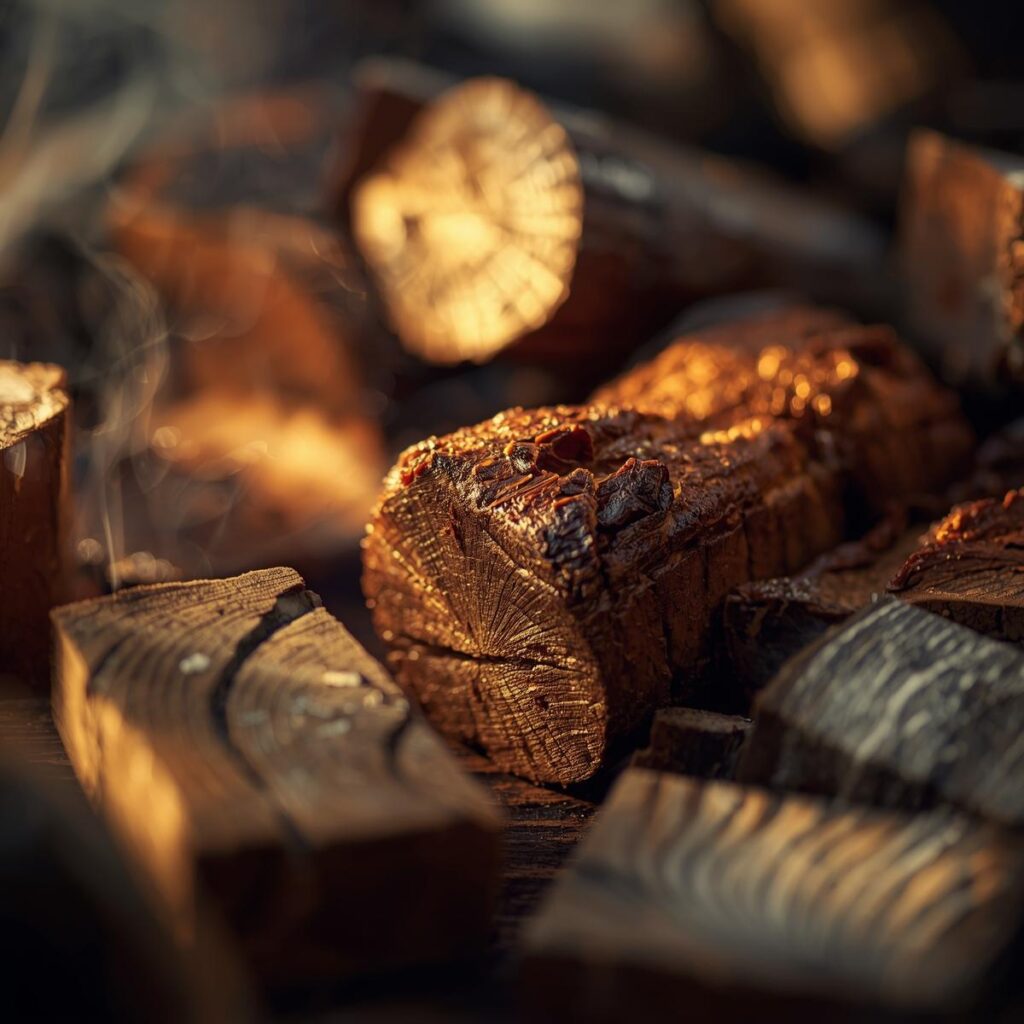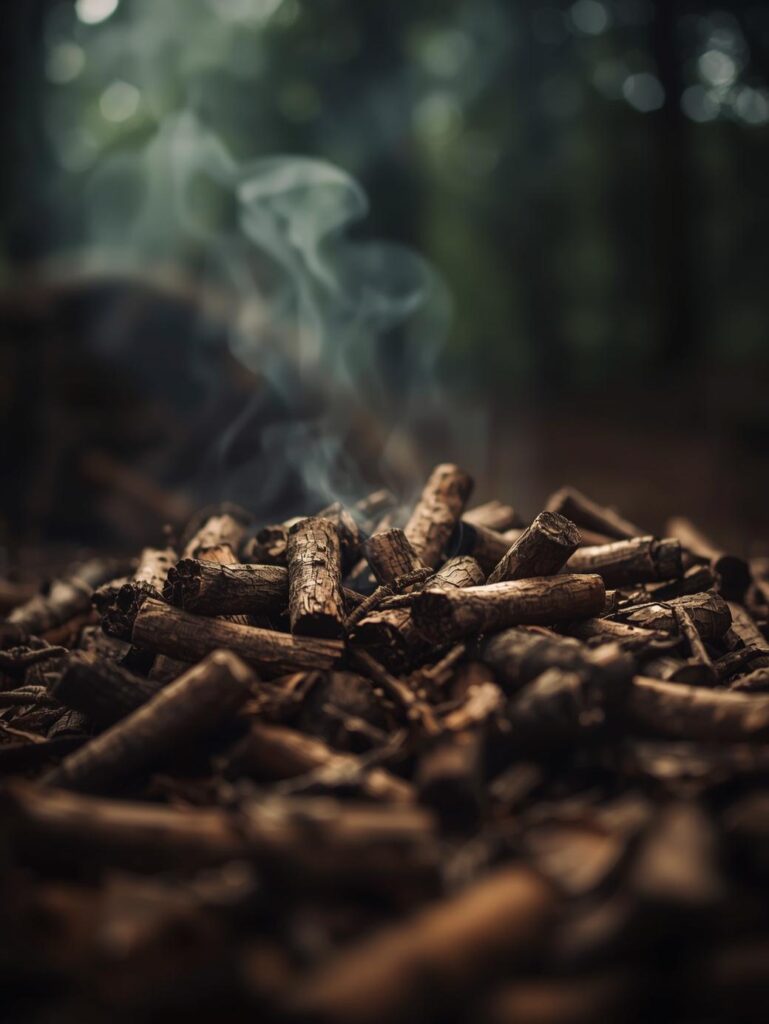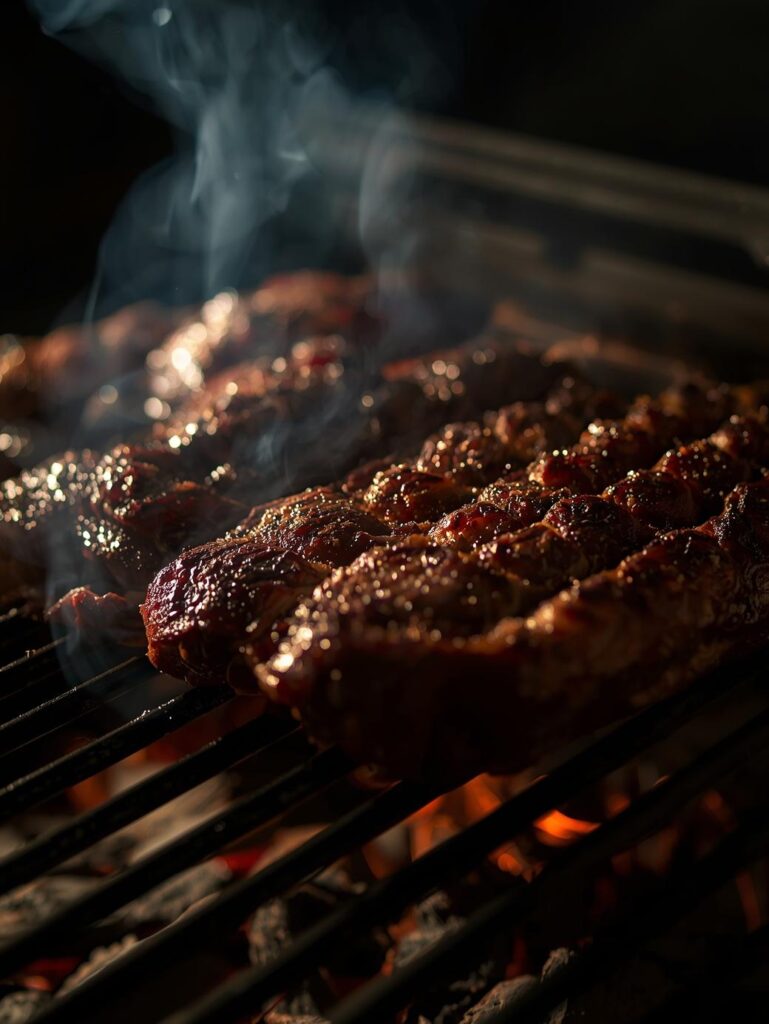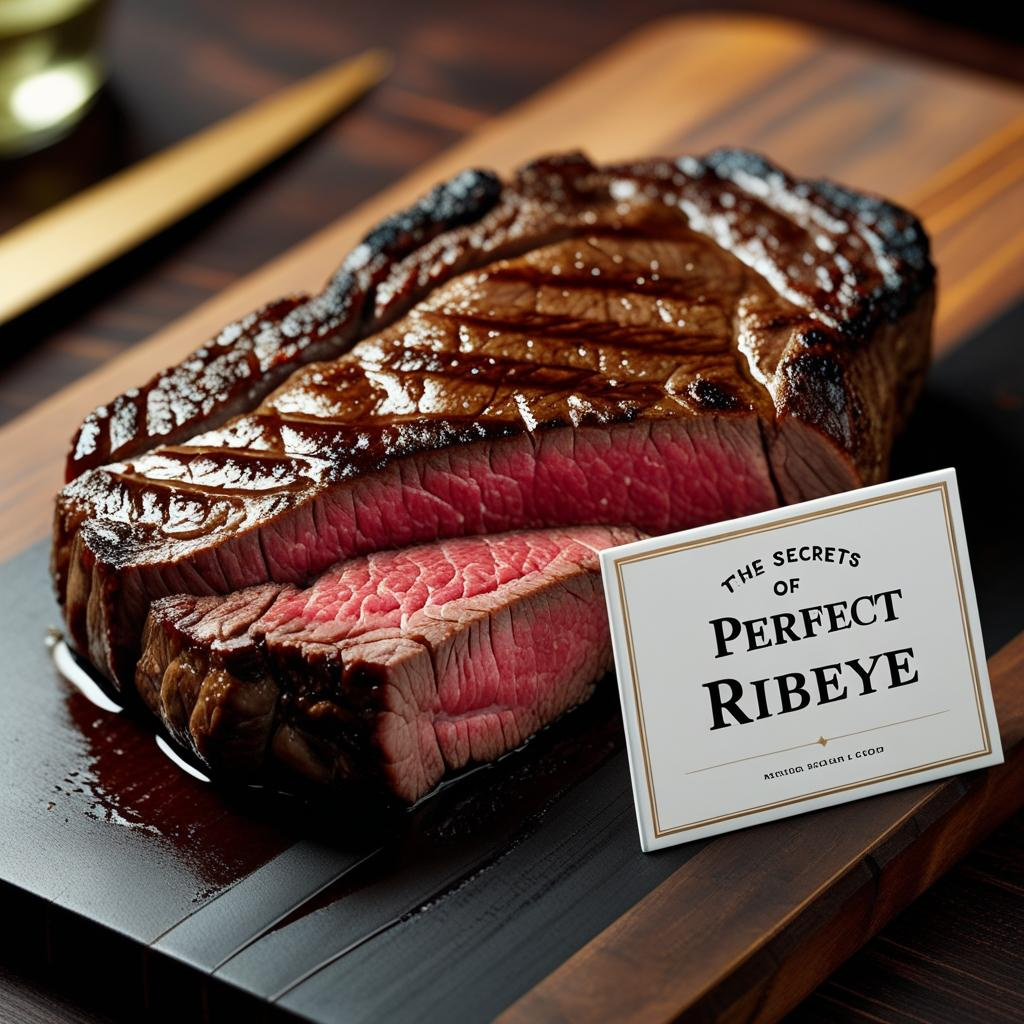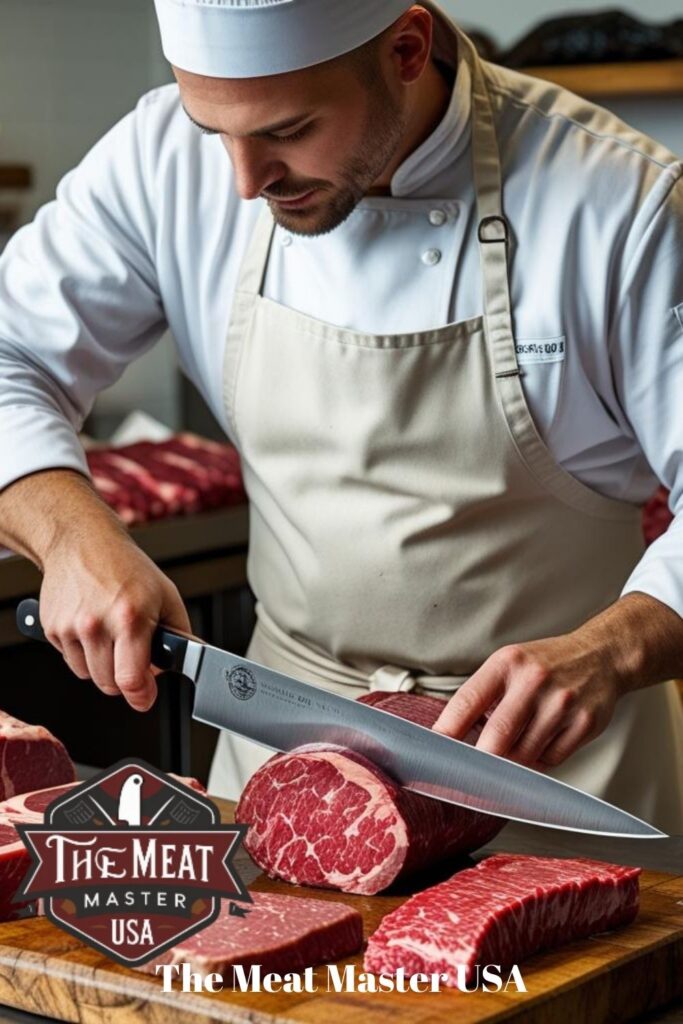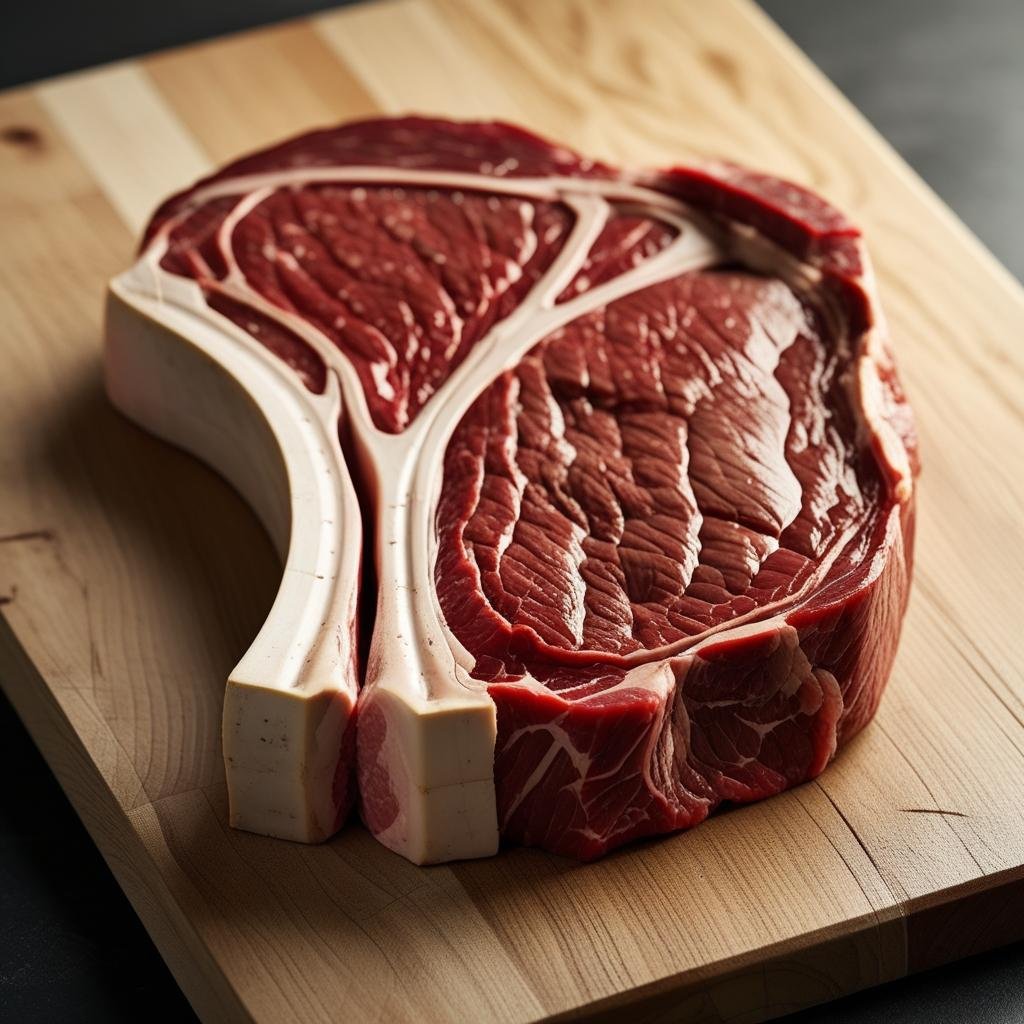Expert’s Note: This comprehensive guide expands on our Ultimate Smoking Woods Guide. Choosing the right wood isn’t just about flavor—it’s about understanding the soul of your smoke. Each wood species tells a different story, and mastering their use transforms you from someone who smokes meat into someone who crafts with smoke.
WOOD SMOKING MASTERY: FROM HICKORY TO MESQUITE
“Smoking wood is the painter’s palette of the pitmaster. Hickory is your bold primary color—strong and unmistakable. Fruit woods are your pastels—gentle and sweet. Mesquite is your intense accent color—powerful but dangerous in the wrong hands. Oak is your reliable neutral—the foundation that makes everything else work. Master this palette, and you don’t just cook meat; you create smoke-seasoned masterpieces.”
Wood Smoking Mastery: From Hickory to Mesquite – The Complete 2025 Guide
Download our free Wood Smoking Pairing Chart - your quick-reference guide to perfect smoke combinations.
The difference between good smoked barbecue and legendary smoked barbecue often comes down to one critical choice: your wood selection. While many pitmasters focus on temperature control and timing, true smoke mastery begins with understanding the character, intensity, and personality of each wood species. This guide takes you deep into the world of smoking woods, from the familiar hickory to the formidable mesquite, teaching you not just which woods to use, but why they work and how to combine them for extraordinary results.
🔬 THE SCIENCE OF SMOKE: UNDERSTANDING WHAT YOU’RE CREATING
Before choosing woods, understand the chemical transformation happening in your smoker.
⚙️ The Chemistry of Smoke Flavor
How Wood Transforms Into Flavor
- Lignin Breakdown: This complex polymer in wood cell walls breaks down into smoky phenols like guaiacol and syringol—the primary compounds we recognize as “smoke flavor.” Different woods have different lignin compositions, creating distinct smoke profiles.
- Cellulose & Hemicellulose: These carbohydrates break down into sweet carbonyl compounds including furans and furanones, which provide the caramel, nutty, and sweet notes that balance smoke’s intensity.
- Volatile Organic Compounds (VOCs): Hundreds of compounds contribute subtle notes—from the vanilla hints in cherry wood to the floral notes in apple. This complexity is what makes wood smoking an art rather than a science.
- Moisture Content Impact: Properly seasoned wood (15-20% moisture) produces clean smoke, while green wood creates bitter, acrid flavors from incomplete combustion and excessive creosote formation.
Learn more about the science in our Science of Smoke Rings Guide.
🎯 Good Smoke vs. Bad Smoke: Reading the Signs
✅ Good Smoke (Thin Blue/White)
- Nearly invisible wisps with blue tint
- Clean, pleasant aroma
- Indicates complete combustion
- Results in sweet, clean flavor
- Minimal creosote buildup
❌ Bad Smoke (Thick White/Black)
- Dense, choking clouds
- Acrid, bitter smell
- Indicates incomplete combustion
- Causes bitter, harsh flavor
- Heavy creosote deposition
🌳 THE WOOD MASTERY MATRIX: COMPLETE WOOD PROFILES
Every wood has a personality. Understanding each one’s character is the foundation of smoke mastery.
🔥 Strong & Bold Woods: The Power Players
Hickory – The American Classic
- Flavor Profile: Strong, bacon-like, savory with sweet undertones
- Best For: Pork (shoulder, ribs), beef (brisket, beef ribs), strong game meats
- Burn Characteristics: Hot, long-lasting burn with consistent smoke
- Regional Connection: Traditional in Southern and Midwestern BBQ
- Pro Tip: Can overpower delicate meats—blend with oak or fruit woods for balance. Use 100% hickory for traditional pork shoulder.
Mesquite – The Texas Powerhouse
- Flavor Profile: Intense, earthy, slightly sweet with distinct sharpness
- Best For: Beef (especially steaks, briskets), lamb, short-duration smoking
- Burn Characteristics: Very hot, fast burn—can be challenging to control
- Regional Connection: Essential to Central Texas barbecue tradition
- Pro Tip: Use sparingly or blend with oak. Ideal for hot-and-fast cooking rather than long smokes. Perfect for reverse-seared steaks with just 30-45 minutes of smoke.
🛡️ Versatile & Balanced Woods: The Workhorses
Oak – The Pitmaster’s Foundation
- Flavor Profile: Medium-strong, versatile, slightly sweet and nutty
- Best For: Everything—especially brisket, pork, sausage, poultry
- Burn Characteristics: Consistent, predictable, excellent heat output
- Regional Connection: The backbone of Texas Hill Country barbecue
- Pro Tip: White oak is slightly milder than red oak. Oak is the perfect base wood for blending—it provides structure without dominating.
Pecan – The Southern Gentleman
- Flavor Profile: Rich, nutty, milder cousin to hickory with sweet notes
- Best For: Pork, poultry, fish, cheese, nuts
- Burn Characteristics: Moderate burn rate, pleasant aroma
- Regional Connection: Southern states, particularly Georgia and Texas
- Pro Tip: Excellent for poultry and pork when you want smoke presence without aggression. Makes incredible smoked pecans (smoking the tree’s own nuts!).
🍎 Sweet & Mild Woods: The Delicate Artists
Apple – The Fruitwood Standard
- Flavor Profile: Mild, sweet, slightly fruity with subtle sweetness
- Best For: Poultry, pork, fish, vegetables, cheese
- Burn Characteristics: Mild smoke, good for long sessions
- Regional Connection: Popular nationwide, especially in fruit-growing regions
- Pro Tip: Creates beautiful mahogany color on poultry skin. Mix with hickory for pork to add sweetness to the savory profile.
Cherry – The Beautiful Blush
- Flavor Profile: Mild, fruity, slightly tart with hint of almond
- Best For: Poultry, pork, beef, game birds, cheese
- Burn Characteristics: Mild smoke, imparts beautiful red hue
- Regional Connection: Michigan, Wisconsin, Pacific Northwest
- Pro Tip: Famous for creating stunning smoke rings and reddish tint. Blend with oak for beef to add color and subtle fruit notes.
Pro Tip: The Wood Aging Secret. Properly seasoned wood (aged 6-12 months) produces cleaner smoke than green wood. Test your wood by banging two pieces together—they should make a clear “clack” not a dull “thud.” Properly seasoned wood also has cracks in the end grain and lighter weight.
🎯 THE ULTIMATE WOOD & MEAT PAIRING GUIDE
Matching wood to meat is like pairing wine with food—certain combinations create magic.
🎯 Wood Pairing Matrix for Perfect Results
| Meat Type | Primary Wood | Secondary Wood | Blend Recommendation | Avoid |
|---|---|---|---|---|
| Beef Brisket | Post Oak | Pecan, Hickory | 70% Oak, 30% Pecan | Mesquite (long cooks) |
| Pork Shoulder | Hickory | Apple, Cherry | 50% Hickory, 50% Apple | Mesquite |
| Poultry | Apple, Cherry | Pecan, Oak | 60% Apple, 40% Pecan | Hickory, Mesquite |
| Ribs (Pork) | Hickory, Oak | Cherry, Apple | 70% Hickory, 30% Cherry | Mesquite |
| Fish | Alder, Apple | Pecan, Cherry | 100% Alder or Apple | Strong woods |
| Lamb | Oak, Hickory | Cherry, Pecan | 60% Oak, 40% Cherry | Mesquite |
| Game Meats | Hickory, Oak | Junipers, Cherry | 50% Oak, 50% Hickory | Fruit woods alone |
🚀 ADVANCED WOOD SMOKING TECHNIQUES
Move beyond basic smoking with these professional techniques for extraordinary flavor development.
🔄 The Art of Wood Blending
Creating Custom Smoke Profiles
- Base + Accent Method: Use a neutral wood (oak) as 60-70% of your fuel, then add character woods (fruit, nut) for specific flavor notes. This creates complexity without losing control.
- Progressive Smoking: Start with strong wood (hickory) for the first 2-3 hours when meat is most absorbent, then switch to milder wood (oak or fruit) to finish. This builds foundation without overwhelming.
- Layering Technique: Alternate different woods every hour to create evolving flavor profiles. For example: Hickory → Cherry → Oak for pork shoulder creates depth that unfolds as you eat.
- The Competition Blend: Many champions use 2:1:1 ratio of oak:hickory:cherry for pork. The oak provides base, hickory adds punch, cherry contributes color and sweetness.
🌡️ Temperature-Based Wood Selection
Low & Slow (225-275°F)
- Best Woods: Oak, Hickory, Pecan
- Why: Consistent smoke production over long periods
- Method: Larger logs for sustained burning
- Examples: Brisket, pork shoulder, ribs
Hot & Fast (275-350°F)
- Best Woods: Oak, Fruit woods, Pecan
- Why: Clean burn at higher temperatures
- Method: Smaller chunks for quicker flavor infusion
- Examples: Poultry, pork chops, beef roasts
🌍 REGIONAL WOOD TRADITIONS: LEARNING FROM THE MASTERS
Different barbecue regions developed around locally available woods, creating distinct flavor profiles.
🇺🇸 American Regional Wood Preferences
How Geography Shaped Flavor
- Central Texas: Primarily post oak for brisket—clean, consistent smoke that doesn’t overpower beef. The gold standard for beef barbecue.
- East Texas: Hickory-dominated for pork—strong, traditional smoke flavor that stands up to sweet sauces.
- Carolinas: Hickory and oak for whole hog—wood that can handle long cooks and complement vinegar-based sauces.
- Memphis: Hickory and fruitwood blends for ribs—balancing strong smoke with sweetness for both dry and wet ribs.
- Kansas City: Versatile use of hickory, oak, and fruitwoods to match their diverse meat offerings and sweet sauces.
Explore regional styles in our American BBQ Regional Bible.
🚨 TROUBLESHOOTING COMMON WOOD SMOKING ISSUES
🎯 Wood Smoking Problem Solver
| Problem | Likely Cause | Solution |
|---|---|---|
| Bitter, acrid flavor | Green wood, dirty smoke, creosote buildup | Use seasoned wood, ensure clean combustion, clean your smoker |
| Overpowering smoke | Too much strong wood, oversmoking | Blend with milder woods, reduce smoke time |
| No smoke flavor | Insufficient wood, poor combustion | Increase wood amount, check air flow |
| Uneven smoke penetration | Inconsistent smoke production | Maintain steady fire, use smaller wood pieces |
| White chalky residue | Creosote buildup on meat surface | Improve combustion, reduce smoke early in cook |
| Inconsistent results | Variable wood moisture, species mixing | Source consistent wood, label species clearly |
🏆 THE WOOD MASTER’S WORKFLOW: PERFECT SMOKE EVERY TIME
Follow this professional workflow to ensure consistent, exceptional smoke results.
Professional Wood Preparation Protocol
- Wood Selection (Days Before): Choose appropriate species and ensure proper seasoning (15-20% moisture)
- Size Preparation (Day Before): Cut or split wood to appropriate size for your smoker (chunks for most, splits for offsets)
- Storage Check: Store wood protected from rain but with air circulation to maintain ideal moisture
- Pre-smoke Inspection: Check for mold, excessive bark, or signs of poor seasoning
- Fire Management: Start with small pieces to establish clean burn, add larger pieces once stable
- Smoke Monitoring: Watch for thin blue smoke, adjust air flow as needed throughout cook
- Wood Rotation: For long cooks, have multiple wood species ready for blending or progression
🏁 BECOMING A WOOD SMOKING VIRTUOSO
Wood smoking mastery is a journey of developing intuition and understanding the subtle language of smoke. It begins with learning the basic characteristics of each wood species, progresses through understanding how they interact with different meats, and culminates in the ability to create custom smoke profiles that express your personal barbecue style.
The true mark of a wood master isn’t just knowing that hickory is strong or that apple is mild—it’s understanding when to use 100% oak for a traditional brisket, when to blend hickory and cherry for competition ribs, and when a touch of mesquite can elevate a quick-grilled steak without overwhelming it. This knowledge transforms smoking from a mechanical process into a creative art.
Remember that wood is an ingredient as important as your rub or your meat selection. Treat it with the same respect and attention. Source quality wood, store it properly, and learn to read its behavior in your specific smoker. The relationship between pitmaster, fire, and wood is a conversation—learn to listen to the smoke, and it will tell you everything you need to know.
Your mission: Start with single-wood smoking to learn each wood’s pure character. Smoke a chicken with just apple wood. Do a pork shoulder with just hickory. Then begin experimenting with simple blends. Document your results. Notice how different woods affect not just flavor, but color, bark formation, and aroma. Within a few months, you’ll develop the intuition that separates good smoked barbecue from unforgettable smoked experiences.
Continue Your Wood Smoking Education: Master every aspect of smoke with our complete resource collection:

